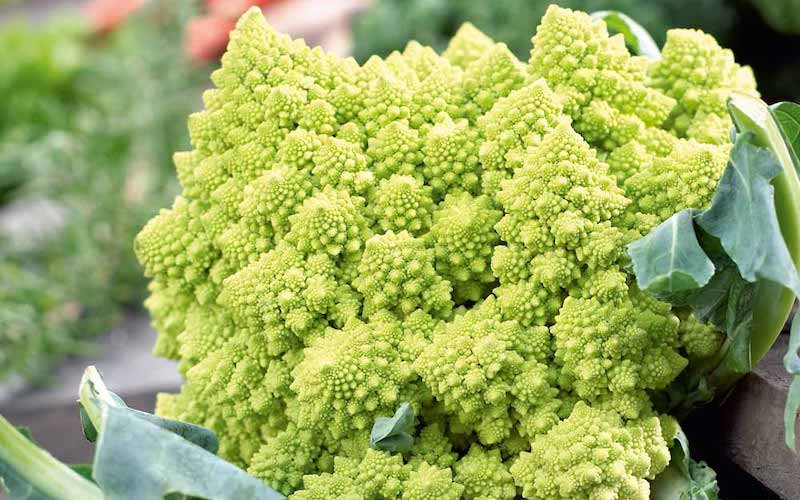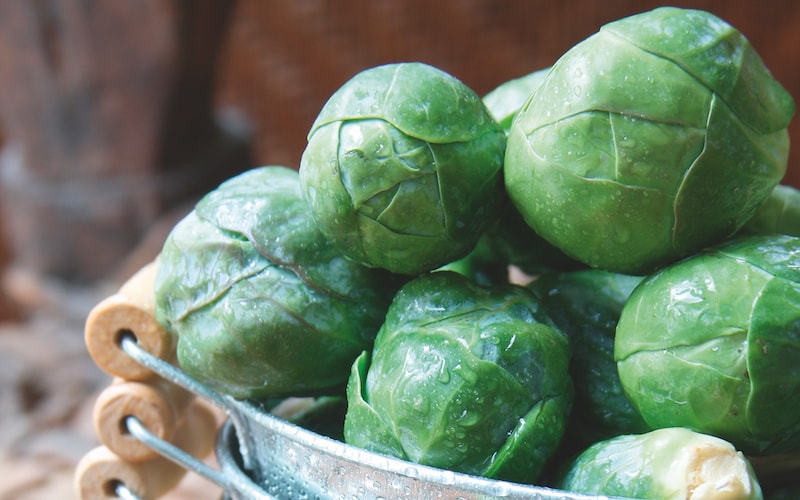Originally developed for large-scale vegetable farming, brassica plugs are hardy plants that can withstand a wide variety of conditions. Whether you opt for cabbage, kale, cauliflower, broccoli or leafy greens, here’s what to do with your vegetable plugs to ensure you get a bumper harvest.
Browse our full range of vegetable plug plants for more inspiration.
What to do with brassica plug plants when they arrive
As soon as your brassica plug plants arrive, open the packaging and make sure the roots are nice and moist. Water them if they’re not. To give your plugs the best chance of thriving, it’s very important to get them into soil as soon as possible.
Suttons provides several different sizes of plug plants. Jumbo plugs and super plugs are generally large enough to be planted straight out into your veg patch or allotment. However, if you go for our smaller value plugs or posti-plugs, you may need to grow them on a little before putting them out into their final positions.
How to prepare the ground for brassicas

Image: Cauliflower Plants ‘Depurple’ from Suttons
Choose a sunny or part-shaded position in the garden. The soil should be weed free, well-worked and moist. Prior to planting, apply a general purpose fertiliser.
Use a trowel to part the soil, creating a shallow furrow into which you can plant your plugs. Firm in the young plants so that the top of the module plug is just below soil level – this helps prevent the roots from drying out.
Water well and regularly, ensuring the plants have sufficient moisture at all times, particularly during warm spells.
Planting sprouting broccoli plugs

Image: Broccoli (Sprouting) Plants ‘F1 Bellaverde® Sibsey’ from Suttons
Position your sprouting broccoli plants at 60cm (24″) intervals in rows 60cm (24″) apart. The plants will ultimately reach around 3ft in height so it’s a good idea to earth up slightly to provide plenty of support as they mature. Crops grown on exposed sites may benefit from staking against ‘wind rock’.
From early winter, harvest the young flower shoots from your sprouting broccoli plants as they appear. Pick whilst young and tender when the buds are tight. Regular picking encourages a steady supply of florets which should continue for several weeks.
Planting cabbage plugs

Image: Visions BV, Netherlands
If you buy jumbo plugs, you can plant your cabbage plants straight out at 30cm (12”) intervals leaving the same distance between rows. Savoy cabbages need a little more space – plant these at 40-50cm (16-20″) intervals in rows 40-50cm (16-20″) apart. As the plants grow, draw earth up around the base of each stem and firm to prevent ‘wind rock’ and improve the plants’ stability.
Plants will heart-up through the spring but, if they’re pointed cabbage varieties, they can also be cut earlier before hearts appear and used for leafy greens. If it’s winter cabbage you’re looking for, our Savoy cabbages provide compact, round, dark green heads from October through to December.
Planting cauliflower plugs

Image: Visions BV, Netherlands
To overwinter your cauliflowers, pot your cauliflower plugs on before planting them out at 60cm (24″) intervals in rows 60cm (24″) apart. Expect large white curds to form from April onwards.
For autumn/winter cauliflower plants including the architectural Romanesco varieties, plant in the same way but expect the curds to form from October through to December.
Careful monitoring of your cauliflowers is required – they don’t do well when under-watered or waterlogged. Keep the soil moist, look out for invading caterpillars, and protect developing curds from the sun by folding the leaves over them.
Planting kale plugs

Image: Floramedia
Excellent winter hardiness makes kale plants a useful winter/spring vegetable at a time when fresh garden produce is scarce. Providing you with delicious, highly nutritious, “leafy” pickings, kale requires little care apart from watering, should this be necessary. Planting a range of kales will keep you well-supplied with tasty leaves through most of the year and especially during the winter when kale comes into its own – a frost helps to enhance its bold flavour.
- ‘Black Kale’ has attractive deep blue, deeply dimpled, strap-like leaves and reaches a height of 75cm. Plant this variety 60cm apart.
- Kale ‘Reflex’ is a curly, succulent, dark-leaved variety which you can pick from early November right through to early April. Plant this one 45-60cm (18”-24”) apart.
- Kale ‘Redbor’ is a winter hardy variety that boasts luscious purple-red curled leaves, and should be planted 60cm apart.
Planting Brussels sprouts plugs

Image: Brussels Sprout ‘Crispus’ from Suttons
Grow Brussels sprout plants deeply in firm, rich fertile, well drained soil – a site that has previously grown beans or peas is ideal. Position your plugs 60cm (24”) apart and water thoroughly after planting.
Try Brussels Sprout ‘Crispus’ for a profusion of dark green buttons ready from September through to Christmas. You’ll need to pot your plugs on before they’re ready to plant out, but you can even try growing them in containers if space is at a premium.
Brassica plug plants offer a shortcut to thriving leafy veg which is both nutritious and delicious. Get a head start on the growing season by browsing our wide range of vegetable plants for gardens and allotments.
Lead image: Cabbage Plants ‘Savoy Continuity Collection’ from Suttons
Last Updated on February 28, 2025 by Suttons Horticultural Team




